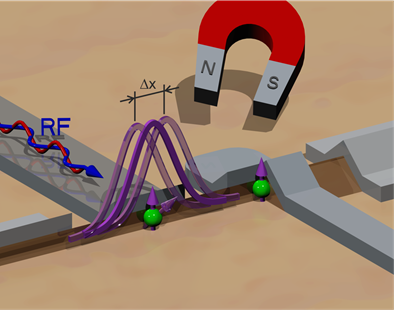Physikalisches Kolloquium: Playing with holes
Time
Tuesday, 25. June 2019
15:15 - 16:45
Location
R 513
Organizer
Der Fachbereichssprecher
Speaker:
Prof. Dr. Georgios Katsaros, IST Austria, Klosterneuburg/Vienna, Austria
The interest in holes as potential spin qubits has strongly increased in the past few years. Due to the intrinsically large spin orbit coupling, hole spin qubits should be electrically tunable and show high Rabi frequencies. Indeed in 2016, the first hole spin qubit with Rabi frequencies as high as 70MHz was demonstrated [1]. Here I will speak about the first Ge spin 3/2 hole spin qubit. The qubit is formed in a Ge hut-wire [2] double quantum dot. G-factor measurements underline the heavy-hole character of the confined states [3]. Presumably due to the even stronger spin orbit coupling in Ge, Rabi-frequencies of 140 MHz were reached [4]. Ramsey experiments revealed dephasing times exceeding 130 ns. Finally, by measuring the spin relaxation time of holes in Ge hut wires an upper bound for the coherence time could be extracted [5]. While these experiments underline the potential of hole spins in Ge, randomly grown nanowires are not very appealing for the creation of more complex qubit devices. Latest results on potentially scalable Ge quantum devices are going to be presented.
[1] R. Maurand et al., Nature Communications 7, 13575 (2016)
[2] J. J. Zhang et al., Phys. Rev. Lett. 109, 085502 (2012)
[3] H. Watzinger et al., Nano Lett. 16, 6879 (2016)
[4] H. Watzinger, J. Kukučka et al., Nature Communications 9, 3902 (2018)
[5] L. Vukušić et al., Nano Lett. 18, 7141 (2018)

